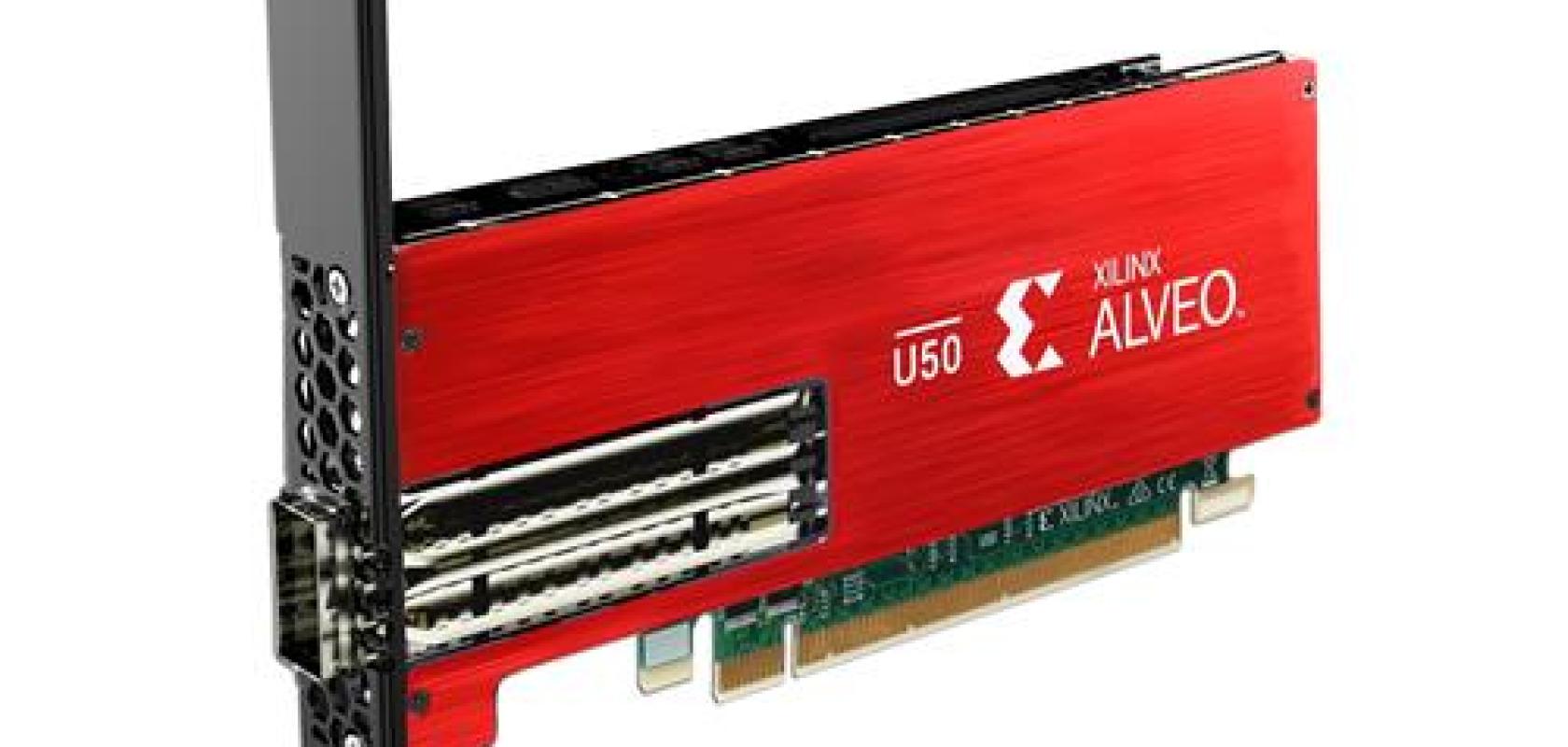Xilinx is preparing for the SPS show at the end of November in Nuremberg, Germany with an AI demo platform it has developed with On Semiconductor. The platform is to highlight future retail applications using vision.
The system-on-chip and FPGA firm will also be exhibiting its Alveo accelerator cards, the latest release being the Alveo U50, along with a new software platform called Vitis that takes a customer’s AI model and optimises it for Xilinx SoCs.
The Alveo accelerator cards are designed for use in data centres, but Chetan Khona, Xilinx’s director of industrial, vision, healthcare and sciences, told Imaging and Machine Vision Europe that the cards would also make excellent frame grabbers for systems using multiple cameras – he mentioned systems using 16, 32 or even 64 cameras.
The cards would speed up an industrial PC by offloading some of the processing. Motion planning for robotics is another potential industrial application.
Xilinx is working with machine vision providers including Framos, with which Xilinx has developed the SLVS-EC RX IP core that reduces overhead and complexity implementing a Sony image sensor with SLVS-EC interface. Similar IP cores for other interface standards have been developed with Euresys and Pleora.
Xilinx has also worked with GE on time-sensitive networking (TSN), a deterministic Ethernet connectivity that Khona explained could be used in machine vision cameras in the future.
Some of the firm’s machine vision customers have already purchased its IP core for TSN, according to Khona, and are integrating it as a way to get their cameras connected on future industrial networks, TSN as the back layer with OPC UA as the application layer.
Time-sensitive networking supports multiple classes of traffic over one network. A network is homogenous and all the data is treated equally in classic Ethernet, but in TSN different data streams can be assigned classes and given different levels of priority.
‘We’ve had machine vision customers purchase our IP core and get ready for this dawn of OPC UA,’ Khona said. At SPS, many exhibitors will be advertising the fact that their products support Industry 4.0 or OPC UA.
Khona expects machine vision to transition further from ‘dumb’ cameras into smart or embedded cameras with processing onboard. Xilinx Zynq system-on-chips are used in various smart cameras, such as IDS’s new NXT app-based cameras.
Smart cameras have penetrated the healthcare market before factory automation, according to Khona, because factories have a set infrastructure that vision equipment has to plug into. ‘Every other part of my business has moved to smart technology with AI built in, but machine vision is just about to lift off here,’ he said.
One of the reasons is that it’s easier to bring processing to data than it is to bring data to the processing. Traditionally, in machine vision systems, this hasn’t held true – sensor data is taken by a frame grabber and processed on a PC. But with smart cameras there will be more processing done in the camera rather than shipping it off elsewhere.


